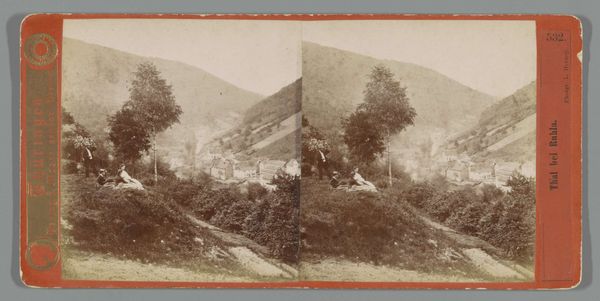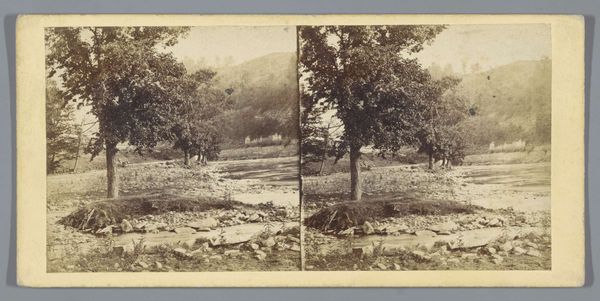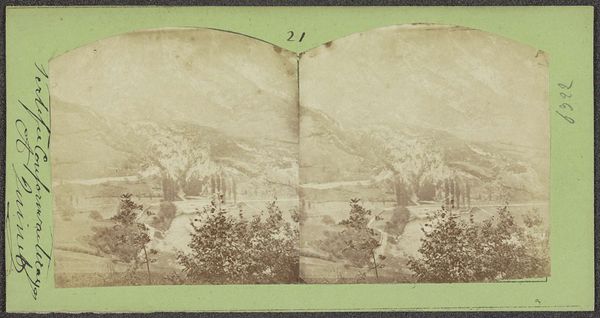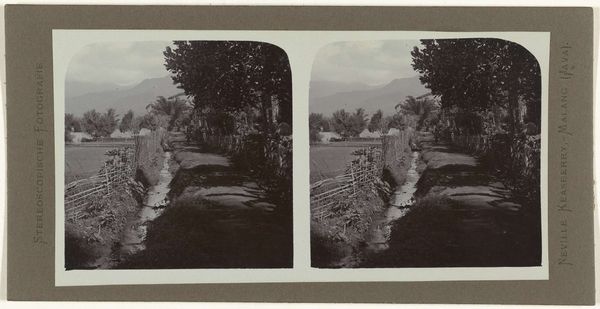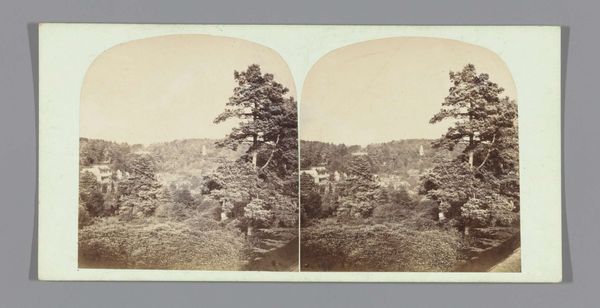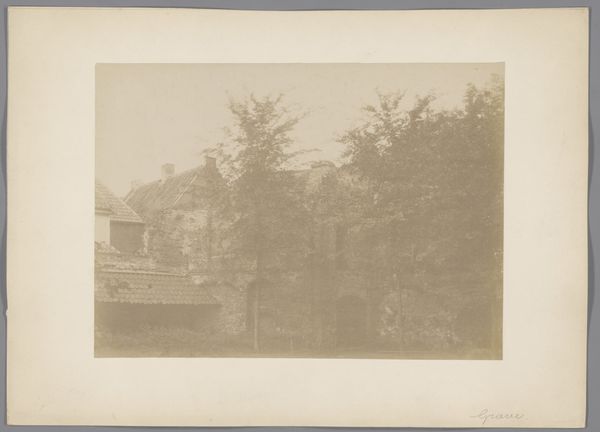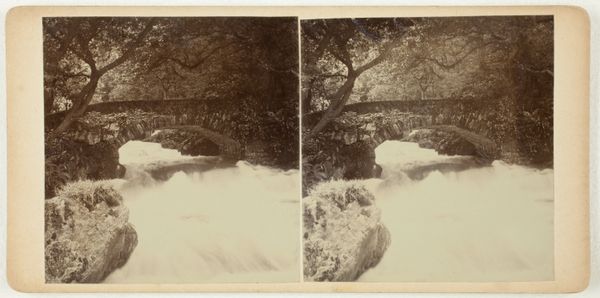
Dimensions: 8 × 7.9 cm (each image); 8.1 × 17.9 cm (card)
Copyright: Public Domain
Editor: Here we have an untitled photograph from around the 1860s, often called "Wasdale." It's a lovely landscape scene of a stone bridge over a stream. I'm immediately drawn to the quiet stillness of it. What do you see in this piece? Curator: I see the bridge as a powerful symbol, a meeting point, quite literally, but also figuratively. Bridges in art often signify transition, connection between two states of being or points of view. And the water flowing beneath…do you think of that? Editor: Yes, it’s the water—its movement is interesting. How the bridge is fixed and stable and the water is ever changing… Curator: Precisely. Consider also the domestic scene in the background; this emphasizes the human presence interwoven with the landscape. Think about the idea of home, of shelter, existing in harmony, or perhaps in tension, with the natural world. How do those elements speak to you? Editor: I hadn't thought about it that way, but the house definitely gives the image a sense of human scale. It suggests a narrative of human life unfolding against this backdrop. Curator: Yes! And what might that narrative be? Consider, too, how this photograph captures a specific time, but also something timeless. Editor: I suppose that it makes me think of the enduring connection between people and nature, and the search for harmony between the two. I think I see this scene differently now. Curator: Indeed, a photograph of a bridge shows much more than it seems, bridging time itself!
Comments
No comments
Be the first to comment and join the conversation on the ultimate creative platform.
